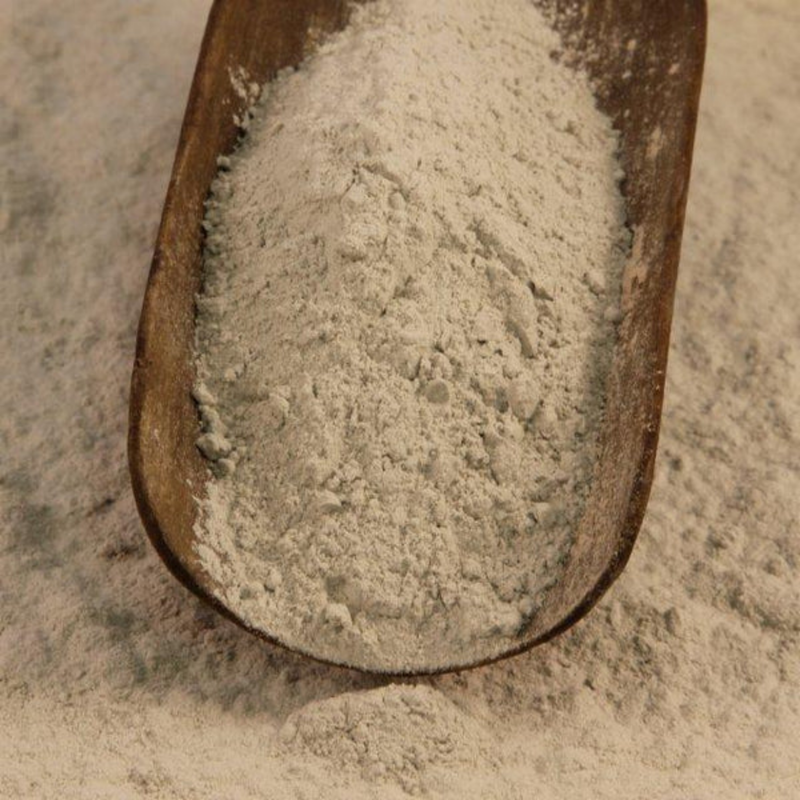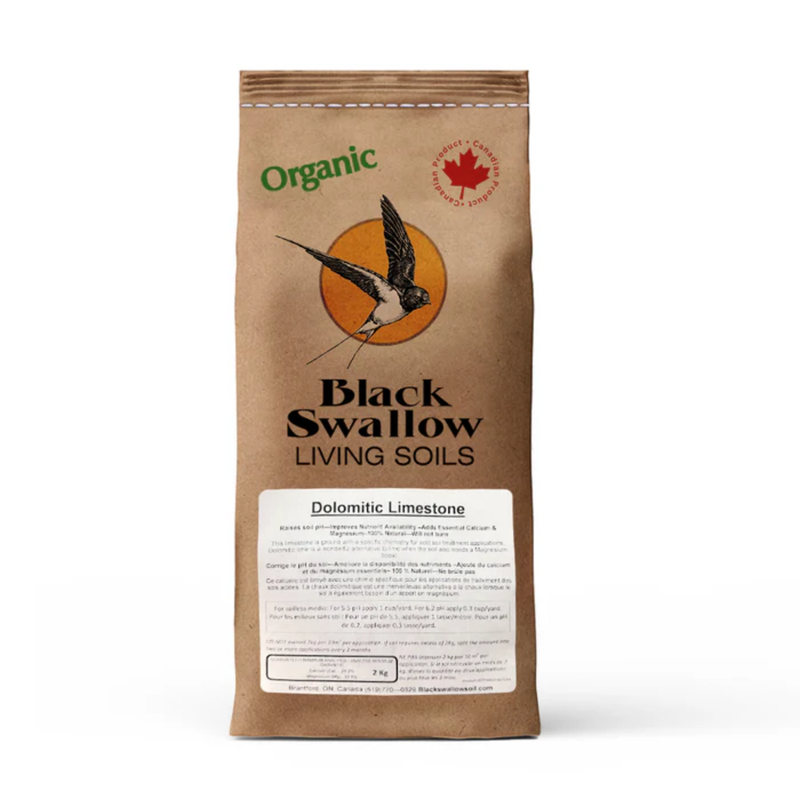

Black Swallow Dolomitic Limestone is a powerful soil amendment that provides both calcium and magnesium to balance soil pH and improve overall soil health. Unlike other calcium sources, such as calcitic limestone, dolomitic limestone combines calcium carbonate with magnesium carbonate, offering a dual benefit to the soil. It works slowly to neutralize soil acidity, promoting healthier plant growth and enhancing microbial activity. While dolomitic limestone is highly beneficial in magnesium-deficient soils, it’s important to monitor your soil’s magnesium content, as excessive magnesium can cause soil compaction and promote weed growth. Ideal for sandy, quick-draining soils, this product is essential for gardeners and farmers looking to restore their soil’s mineral balance and create optimal growing conditions.
Key Features:
-
Calcium & Magnesium Combination: Provides both calcium and magnesium to balance your soil’s nutrient profile.
-
Neutralizes Soil Acidity: Helps to raise soil pH levels, creating a more favorable environment for plant growth.
-
Improves Soil Health: Promotes better soil structure and microbial activity, enhancing fertility and plant vigor.
-
Ideal for Magnesium-Deficient Soils: Best for use in soils with low magnesium content, such as sandy or quick-draining soils.
Benefits:
-
Balances Soil pH: Corrects acidic soils, making them more suitable for healthy plant growth.
-
Enhances Nutrient Availability: Magnesium and calcium help improve nutrient uptake and soil structure.
-
Prevents Soil Compaction: Aids in preventing the “binding” of clay soils caused by excessive magnesium.
-
Ideal for Organic Farming: A natural, safe solution to improve soil fertility and plant health.
Application Instructions:
-
For Soil pH Adjustment: Apply 1 lb per 10 square feet of soil. For best results, incorporate into the soil and water thoroughly.
-
For Magnesium Deficient Soils: Use 2-3 lbs per 10 square feet of soil, based on soil test recommendations.
-
Clay or Clay Loam Soils: Not recommended for use in heavy clay soils with high magnesium content.
Storage Instructions:
Store in a cool, dry place to maintain product quality and effectiveness.
Selected page contains no content. Add content to this page in the page editor.
Black Swallow Dolomitic Limestone is a powerful soil amendment that provides both calcium and magnesium to balance soil pH and improve overall soil health. Unlike other calcium sources, such as calcitic limestone, dolomitic limestone combines calcium carbonate with magnesium carbonate, offering a dual benefit to the soil. It works slowly to neutralize soil acidity, promoting healthier plant growth and enhancing microbial activity. While dolomitic limestone is highly beneficial in magnesium-deficient soils, it’s important to monitor your soil’s magnesium content, as excessive magnesium can cause soil compaction and promote weed growth. Ideal for sandy, quick-draining soils, this product is essential for gardeners and farmers looking to restore their soil’s mineral balance and create optimal growing conditions.
Key Features:
-
Calcium & Magnesium Combination: Provides both calcium and magnesium to balance your soil’s nutrient profile.
-
Neutralizes Soil Acidity: Helps to raise soil pH levels, creating a more favorable environment for plant growth.
-
Improves Soil Health: Promotes better soil structure and microbial activity, enhancing fertility and plant vigor.
-
Ideal for Magnesium-Deficient Soils: Best for use in soils with low magnesium content, such as sandy or quick-draining soils.
Benefits:
-
Balances Soil pH: Corrects acidic soils, making them more suitable for healthy plant growth.
-
Enhances Nutrient Availability: Magnesium and calcium help improve nutrient uptake and soil structure.
-
Prevents Soil Compaction: Aids in preventing the “binding” of clay soils caused by excessive magnesium.
-
Ideal for Organic Farming: A natural, safe solution to improve soil fertility and plant health.
Application Instructions:
-
For Soil pH Adjustment: Apply 1 lb per 10 square feet of soil. For best results, incorporate into the soil and water thoroughly.
-
For Magnesium Deficient Soils: Use 2-3 lbs per 10 square feet of soil, based on soil test recommendations.
-
Clay or Clay Loam Soils: Not recommended for use in heavy clay soils with high magnesium content.
Storage Instructions:
Store in a cool, dry place to maintain product quality and effectiveness.
Selected page contains no content. Add content to this page in the page editor.



